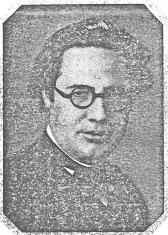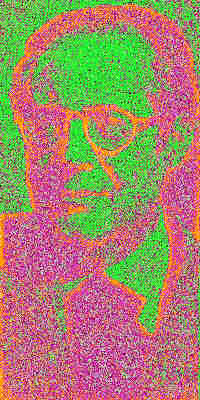Cumpiano guitars
Cumpiano articles archive
Make a guitar with William
Andrés Segovia
 |
Early
U.S. Performance reviews New York
Time's 1927 article announcing the advent of Segovia first American Tour: "the leading exponent of an instrument that
heretofore had little consideration as a vehicle for the interpretation of serious
music."
New York Times 1928 review of Segovia's United
States debut: A great master who "did not and
cannot succeed in removing the limitations which will always surround his
instrument."
New York
Times, January 23, 1928
Segovia's Musical Forum, Guild Theatre
Concert
New York Times, January 30, 1928
Packed Theatre Hears Segovia
New
York Times, February 5, 1928
Ovation to Segovia: Guitarist Gives a Work of
Variations With Glittering Effects |
| Biography of Segovia's life and work Bach's Chaconne and the Guitar,
translation of 1930 article by Marc Pincherle,
Secretary of the French Society of Musicology in Paris
Segovia's
luthier, Manuel Ramirez
reminisces about making guitars for him and his vain efforts to please him |
 |
 |
Segovia Town Hall Recital Program Text Interview with Segovia
by the New Jersey Classical Guitar Society
|
Cumpiano guitars
Cumpiano articles archive
Make a guitar with William
Ovation to
Segovia
Guitarist Gives a Work of Variations With Glittering Effects
NYT Feb 5. 1928
Andrés Segovia, the young Spaniard whose playing
of the guitar has astonished and delighted local concertgoers this season, reappeared in a
recital yesterday afternoon in the Town Hall before an audience that overflowed to the
stage.
He began with an Etude and Theme Variations by
Ferdinand Sor, a little-known early composer represented on M. Segovia’s debut
program some weeks ago. In the second of these pieces a charming set of variations with
the true eighteenth-century sparkle and glitter, the artist achieving some ravishing
effects, bringing from his instrument in passages of lightning speed and intricate weaving
of voices rainbow cascades of diamond-points of tone.
Bach, Hayden, Granados, Albeniz and Torroba were
other composers represented on the program. Mr. Segovia was enthusiastically received and
gave several encores.
Return to William
Cumpiano's Segovia Page
Musical Forum
NYT Jan 23, 1928
Andres Segovia made his second public appearance
in New York at the concerto given by the Musical Forum last night in the Guild Theatre.
With Mr. Segovia appeared a select chorus of solo voices directed by Kurt Schindler, which
sang part songs by various Spanish composers and by Maurice Ravel ("Trois
chansons"). Mr. Segovia was if anything more fortunate on this occasion than on that
of his New York debut. He was heard in the first place, in an auditorium of a special
intimacy against a background of the deep shadows of curtains that set the stage, and the
Spanish costumes of the singers. The lights were low while he played. His performance was
as an improvisation for a group of appreciative friends.
Thus Mr. Segovia was able to indulge his penchant
for fine effects to the utmost; and these effects crossed the footlights. More than ever
he appeared entirely apart from the concert artist or professional virtuoso. More than
ever he wrapped a spell about his audience. The guitar had a hundred colors, a hundred
voices, including the human voice. The very limitations of sonority, duration of tone,
dynamics and vibrancy, conducted to its eloquence. Now one heard a distant shadowy
thrumming, from which a solo voice emerged, in dramatic recitative. Always the voice was a
little subdued, a little ghostly, an echoing voice that might have sounded throughout the
dust of the grave and the reveries of many ages. Ore there was spangled brilliancy and
flicker, pride of race, pride of the body, the throb of the dance.
Over this music, so strangely tender, capricious,
or melancholy, there crouched and pondered the bent bony of a rather plump man in
spectacles, talking to himself with his instrument, remembering things that could be
recalled in no other way, and alone, as it seemed, with his memories. It seemed that he
rubbed his eyes as he rose slowly, a little absent-mindedly, a little apologetically, to
bow to those who had listened to him from a thousand years away. In this performance was
the simplicity of the savage, the sensibility of the patrician, the artist’s creative
power.
A well-conceived foil to the performances of Mr.
Segovia was the singing of Mr. Schindler’s chorus, and their program. the songs
arranged from the music of various Spanish composers are in each case of exotic and
distinctive beauty. The performance of the remarkable "Trois chansons" of
Ravel—songs in the spiriti of the "Moyan Age," were a timely remembrance of
the presence of that composer in this country, and further testimony to the extraordinary
knowledge and imagination of his best art.
The theatre was packed. The concert gave
exceptional pleasure to the audience.
Return to William
Cumpiano's Segovia Page
Packed
Theatre Hears Segovia
NYT Jan 30 1928
The repertory of Andres Segovia, who made his
third public appearance in New York yesterday afternoon in the Gallo Theatre, appears
almost as extensive as his technique on his chosen instrument. He provided his audience
yesterday with a program for the guitar which ranged all the way from Sor with his sonata
back through Turina, Coste, Tschaikowsky, Ponce and Albeniz to Bach and Handel. Again the
theatre was packed, and again Mr. Segovia, with an art personal and incomparable, exerted
his sway.
Return to William
Cumpiano's Segovia Page
Segovia Plays to Crowded House
NYT Feb 16 1928
Andres de Segovia [sic], the distinguished
guitarist of Spain, gave a final recital of the season in New York yesterday afternoon in
Town Hall. As usual, the auditorium was crowded and Mr. Segovia played with his wonted
mastery of poetry and conception. He was applauded to the echo and in response to the
desire of the audience extended his program.


